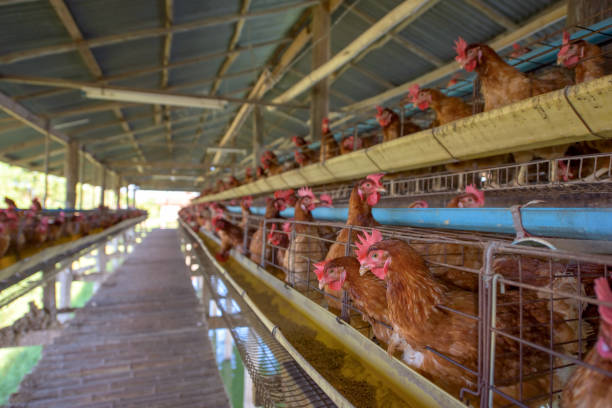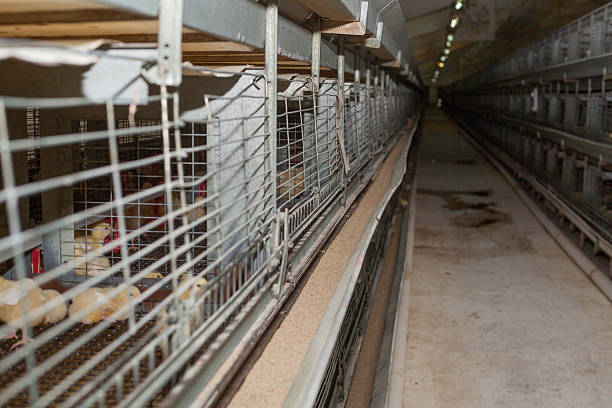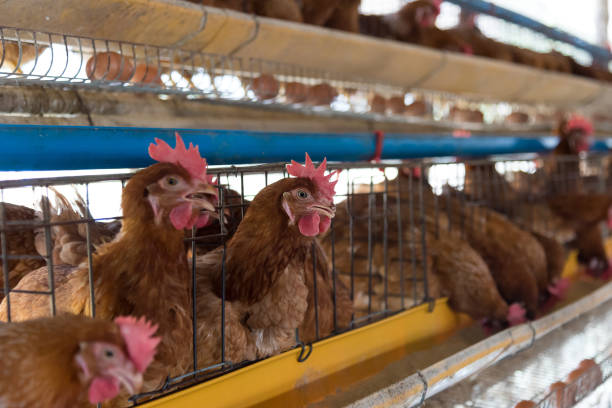Choosing the Best Poultry Cage System for Your African Farm
Choosing the Best Poultry Cage System for Your African Farm
Poultry farming in Africa is experiencing a boom, driven by increasing demand for chicken and eggs. To capitalize on this growing market, African farmers are constantly looking for ways to improve efficiency, increase production, and maximize profitability. One of the most crucial decisions you’ll make as a poultry farmer is choosing the right cage system. The cage system you select will significantly impact your chicken’s health, welfare, egg production, ease of management, and overall profitability. This article delves into the world of poultry cage systems, specifically tailored for the unique challenges and opportunities faced by African farmers.
Why Choose a Cage System?
Before diving into the different types of cage systems, let’s understand why cage systems are becoming increasingly popular among African poultry farmers:
Increased Space Utilization: Cage systems allow you to house a larger number of chickens in a smaller area compared to traditional free-range or deep litter systems. This is especially advantageous in areas where land is limited or expensive.
Improved Hygiene and Disease Control: By keeping chickens off the floor, cage systems reduce their exposure to fecal matter and other potential sources of disease. This leads to a healthier flock, reduced mortality rates, and lower veterinary costs.
Easier Egg Collection: Cage systems make egg collection easier and more efficient. Eggs roll out of the cages and into collection trays, minimizing breakage and contamination. This saves time and labor.
Better Feed Management: Cage systems allow for more precise feed distribution, reducing feed wastage and ensuring that each chicken receives the appropriate amount of nutrition.
Reduced Broodiness: Cage systems discourage broodiness (the tendency of hens to sit on eggs), allowing hens to focus on egg production.
Predator Protection: Cage systems protect chickens from predators such as foxes, snakes, and wild dogs, which can be a significant problem in some areas.
Improved Record Keeping: Cage systems make it easier to track individual hen performance, allowing you to identify and cull unproductive birds.
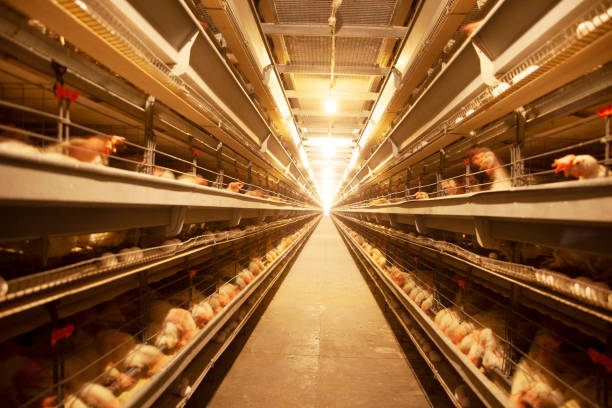
Greater Control over Environment: Modern cage systems can be integrated with environmental control systems, such as ventilation, lighting, and temperature control, to optimize chicken comfort and productivity.
Types of Poultry Cage Systems
Several types of poultry cage systems are available on the market, each with its own advantages and disadvantages. Here’s a rundown of the most common types:
Layer Cage Systems: Designed specifically for egg-laying hens, these systems typically consist of rows of cages arranged in tiers. Each cage houses a specific number of hens, usually 3-5 birds per cage. Layer cage systems come in various configurations, including:
A-Frame Cages: These cages have a sloping roof that allows eggs to roll out easily. They are relatively simple and inexpensive to install.
H-Frame Cages: These cages have a horizontal frame that provides greater stability and support. They are often used in larger poultry farms.
Flat Deck Cages: Flat deck cages have a flat floor and are typically used for younger birds.
Broiler Cage Systems: Designed for raising meat chickens (broilers), these systems provide a controlled environment that promotes rapid growth and efficient feed conversion. Broiler cage systems typically have larger cages than layer cage systems to accommodate the larger size of broiler chickens. These cages may also be more spacious to allow for greater freedom of movement.
Pullet Cage Systems: Designed for raising young chicks (pullets) from day-old to point-of-lay, these systems provide a safe and comfortable environment that promotes healthy growth and development. Pullet cage systems often have multiple tiers and feature automatic feeding and watering systems.
Factors to Consider When Choosing a Poultry Cage System
Choosing the right poultry cage system for your African farm is a significant investment, so it’s essential to consider several factors before making a decision. Here are some key considerations:
Flock Size: The size of your flock will significantly impact the type of cage system you need. Larger flocks will require more elaborate and automated systems.
Budget: The cost of poultry cage systems can vary widely depending on the type of system, the materials used, and the level of automation. It’s important to set a budget and find a system that meets your needs without breaking the bank. Remember to factor in not just the initial purchase price, but also the cost of installation, maintenance, and operation.
Climate: The climate in your area will influence the design of your cage system. In hot and humid climates, you’ll need a system with good ventilation to prevent heat stress. In cold climates, you’ll need a system with adequate insulation to keep your chickens warm. Consider environmental control measures like fans, misters, and heating systems.
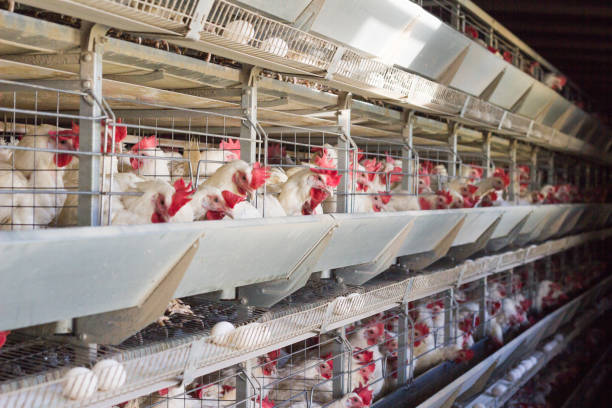
Available Space: The amount of available space will determine the size and configuration of your cage system. If space is limited, you’ll need to choose a system that maximizes space utilization. Vertical cage systems (multi-tiered) are an excellent option for farmers with limited land.
Labor Availability: The level of automation in your cage system will depend on the availability of labor. If labor is scarce or expensive, you’ll need a system with automatic feeding, watering, and egg collection.
Chicken Welfare: Consider the welfare of your chickens when choosing a cage system. Ensure the cages provide enough space for the chickens to move around comfortably, access food and water easily, and express their natural behaviors. While cage systems offer benefits like hygiene, ensure the chickens’ well-being by choosing reputable suppliers and prioritizing designs that promote healthy living conditions.
Egg Quality: Consider how the cage system will impact egg quality. Systems with rolling egg trays and gentle handling minimize egg cracks and breakage. Proper ventilation is also critical to help control temperature and humidity, both of which contribute to egg quality.
Durability and Maintenance: Choose a cage system made from durable materials that can withstand the harsh African climate. Look for systems that are easy to clean and maintain. Galvanized steel is a popular choice due to its rust resistance and longevity. Regular cleaning and maintenance are crucial for disease prevention and extending the life of the cage system.
Local Regulations: Be sure to comply with all local regulations regarding poultry farming and animal welfare. Some areas may have restrictions on the type of cage systems that are allowed.
Energy Costs and Availability: Consider the energy requirements of the cage system, especially if it includes automated features like feeding, watering, or climate control. Assess the reliability of your electricity supply and explore alternative energy sources, like solar power, if necessary. Energy-efficient equipment can significantly reduce operating costs and environmental impact.
Waste Management: A well-designed waste management system is essential for maintaining hygiene and preventing disease. Consider systems that facilitate easy manure removal and disposal. Composting or using manure as fertilizer are sustainable waste management options.
Water Quality and Availability: Reliable access to clean, potable water is critical for poultry health and production. Ensure your cage system includes a reliable watering system and that the water source is protected from contamination. Consider water filtration and treatment options if necessary.
Predator Control: While cage systems offer some protection from predators, assess the specific predator threats in your area and implement additional measures, such as fencing or security lighting, if necessary.
Biosecurity: Implement strict biosecurity measures to prevent the introduction and spread of diseases. This includes controlling access to the farm, providing foot baths and hand sanitizers, and regularly disinfecting equipment.
Supplier Reputation and Support: Choose a reputable supplier with a proven track record of providing high-quality products and excellent customer support. Inquire about warranties, installation services, and after-sales support. A reliable supplier can provide valuable guidance and assistance throughout the lifespan of your cage system.
Making the Right Choice for Your Farm
Choosing the best poultry cage system for your African farm requires careful consideration of your specific needs and circumstances. By carefully evaluating the factors discussed above, you can make an informed decision that will improve your poultry operation’s efficiency, productivity, and profitability. Don’t be afraid to consult with experienced poultry farmers and cage system suppliers to get their advice and recommendations. Remember that the right cage system is an investment in the future of your farm.
Beyond the Cage: Essential Considerations for Success
While choosing the right cage system is critical, success in poultry farming requires attention to other essential aspects as well:
Chick Quality: Start with high-quality chicks from a reputable hatchery. Healthy chicks are more likely to thrive in your cage system and reach their full potential.
Feed and Nutrition: Provide your chickens with a balanced diet that meets their nutritional needs. Consult with a poultry nutritionist to develop a feeding program that optimizes growth and egg production.
Water Management: Ensure your chickens have constant access to fresh, clean water. Regularly clean and disinfect waterers to prevent the spread of diseases.
Ventilation: Ensure good ventilation in your poultry house to remove moisture, ammonia, and other harmful gases. Proper ventilation is essential for preventing respiratory diseases.
Lighting: Provide adequate lighting to stimulate egg production. The optimal lighting schedule will depend on the age and breed of your chickens.
Disease Prevention: Implement a comprehensive disease prevention program that includes vaccination, biosecurity, and regular health checks.
Record Keeping: Keep accurate records of egg production, feed consumption, mortality, and other relevant data. This information will help you identify problems and make informed decisions.
Training: Invest in training for yourself and your staff to ensure that you have the knowledge and skills necessary to manage your poultry operation effectively.
Poultry farming in Africa holds immense potential, and choosing the correct cage system is a crucial step towards unlocking that potential. By carefully considering all the factors discussed in this article and by continuously improving your management practices, you can build a successful and profitable poultry business. Remember to stay updated with the latest advancements in poultry farming technology and adapt your practices to meet the evolving needs of the market. Good luck!



